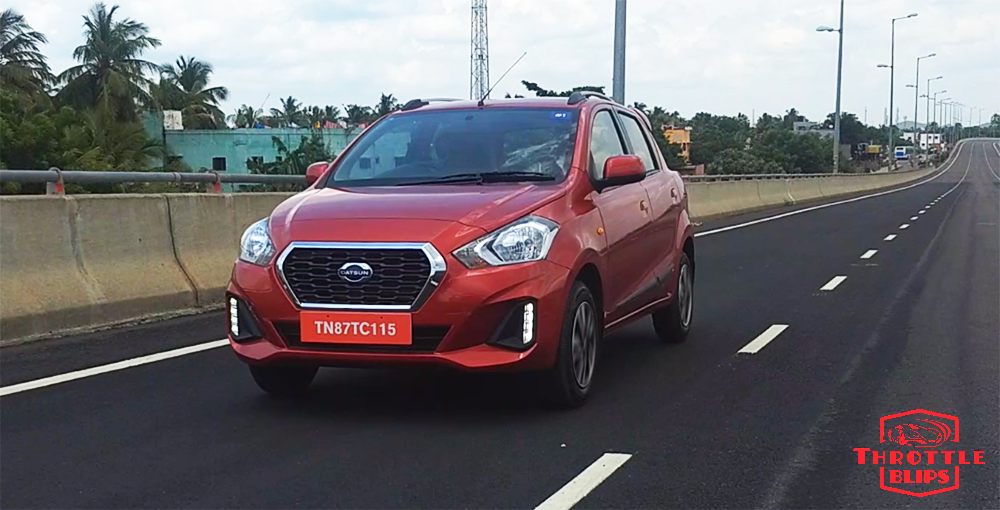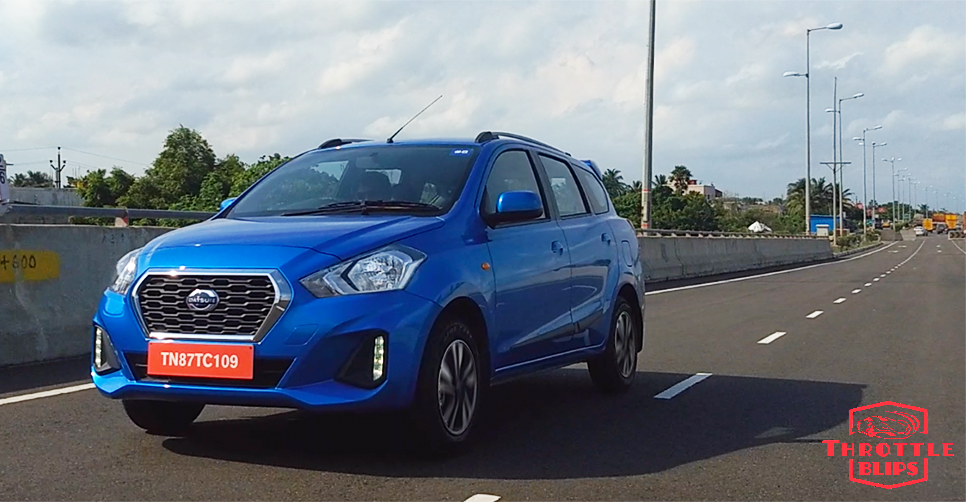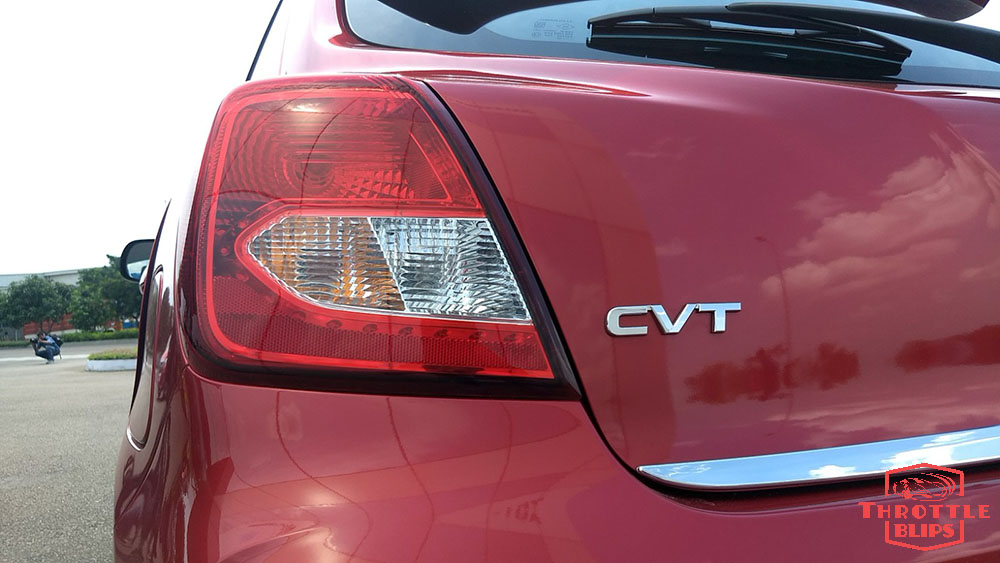The 1.2 litre 3 cylinder petrol engine that powers the GO twins now makes 77 hp in the CVT variants. Datsun is also the only car maker to offer a CVT in the segment. Rivals from the segment use AMT boxes in their automatic variants. So what are they like to drive? The CVT box works well when driving through busy city traffic. The creep function useful in bumper to bumper scenarios as well. Drive with a light foot and progress is good. However, if you mash the throttle hard, the engine revs higher but there is no rise in speed. The notorious rubber band effect makes it presence felt very prominently. While some CVTs offer the option of manual mode where you can shift manually using the gear lever, it is missing in the GO and GO+. There is however, a Sports mode. Once activated, there is a slight gain in performance but nothing that is very significant. Highway driving is not a virtue and the engine does run out of breath as you reach higher speeds. Not to mention its gets noisier too. The gearbox is slightly slow to respond to a kick down, so overtaking will need some planning.
The updated GO and GO+ do come with a good safety kit that includes dual airbags, ABS with EBD, Brake Assist, seat belt reminders, high speed alert and Vehicle Dynamic Control (VDC) which is a segment first.
Datsun has opened pre-bookings for the GO and GO+ plus CVT and prices are expected to be announced shortly. We expect it to be between Rs. 5.5 to 6.5 lakh and if it holds true, these will be the cheapest CVT equipped cars you can buy in the market. The CVT gearbox itself makes it a better option over its rivals in the segment, plus good feature list makes it more of a complete package. Sure the GO twins are not great on the highway and the engine can get noisy at times, but if you are looking for an affordable hatchback or 5+2 seater with an automatic gearbox to mostly drive in the city, both the GO and the GO+ make a strong case for themselves.
Datsun GO, GO+ CVT photo gallery:






















